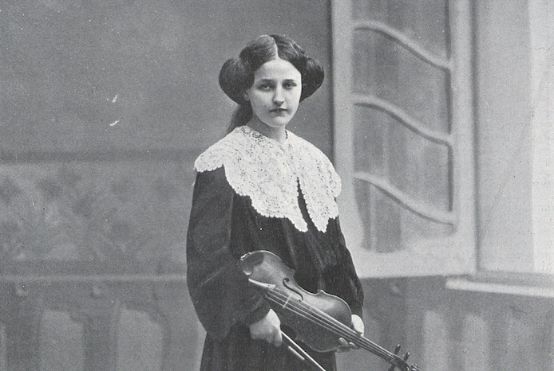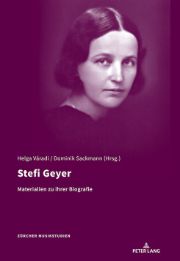Letters tell the story of Stefi Geyer's life
Helga Váradi and Dominik Sackmann have not only published the complete correspondence with Béla Bartók for the first time, but also trace the entire life of the famous violinist.

This weighty book provides intimate insights into the biography of violin virtuoso Stefi Geyer, a pupil of Jenő Hubay, who died in 1956. As a child prodigy, she played a Bériot concerto in Budapest at the age of 10, Spohr's concerto In Form einer Gesangsszene at the age of 12 and soon a large repertoire throughout Europe, e.g. the Brahms concerto in Berlin at the age of 20. In 1907/08, at the age of 19, she exchanged letters intensively with the 26-year-old Béla Bartók. Bartók was busy collecting folk songs at the time. He admired Stefi's skills and was flattered by her interest in his work. They had contradictory discussions about faith in God, various forms of friendship and, again and again, about their work. Bartók wrote a stylistically new violin concerto for Stefi, whose leitmotif d-f sharp-a-c sharp is always mentioned as an unspoken declaration of love. She received the manuscript of the concerto as a gift from Bartók, kept it unplayed and gave it to Paul Sacher on her deathbed. It was premiered by Hansheinz Schneeberger in Basel in 1958.
Shortly after their unhappy love affair ended, Bartók married Marta Ziegler and Stefi married the Viennese E. O. S. Jung, who died of the Spanish flu in 1918. Her acquaintance with the Zurich pianist, composer and concert organizer Walter Schulthess led to their marriage in 1920. Zurich became a center of international concert life. This led to a renewed rapprochement with Bartók, which became tangible in a new correspondence from 1928 until Bartók's death in 1945. In this correspondence, the two couples (Bartók had been married to his pupil Ditta Pásztory since 1923) soon became very familiar thanks to vacations spent together and later became increasingly caring. In addition to her intensive teaching activities in Zurich, the care of her daughter Rosmarin, born in 1921, her work as concertmaster of the Zurich Collegium Musicum, participation in the Lucerne Festival Weeks and concerts worldwide, Stefi Geyer cared for her relatives in Hungary who were suffering under Soviet administration; the letters from the years 1925 to 1956 bear witness to this. 21 letters from Jenő Hubay give us an idea of his continued support for Stefi.
The book reads like an exciting epistolary novel. The letters are valuably supplemented by a photographic curriculum vitae, several introductory texts by the editors Dominik Sackmann and Helga Váradi and the contributors László Vikárius and Kornel Zipernowsky. The elaborately compiled chronological list of all of Stefi Geyer's concerts and performed works is commendable.
Stefi Geyer. Materialien zu ihrer Biografie, edited by Helga Váradi and Dominik Sackmann, Zürcher Musikstudien Vol. 11, 522 p., Fr. 103.00, Peter Lang, Bern et al. 2021, ISBN 978-3-0343-3769-4 (Print)









